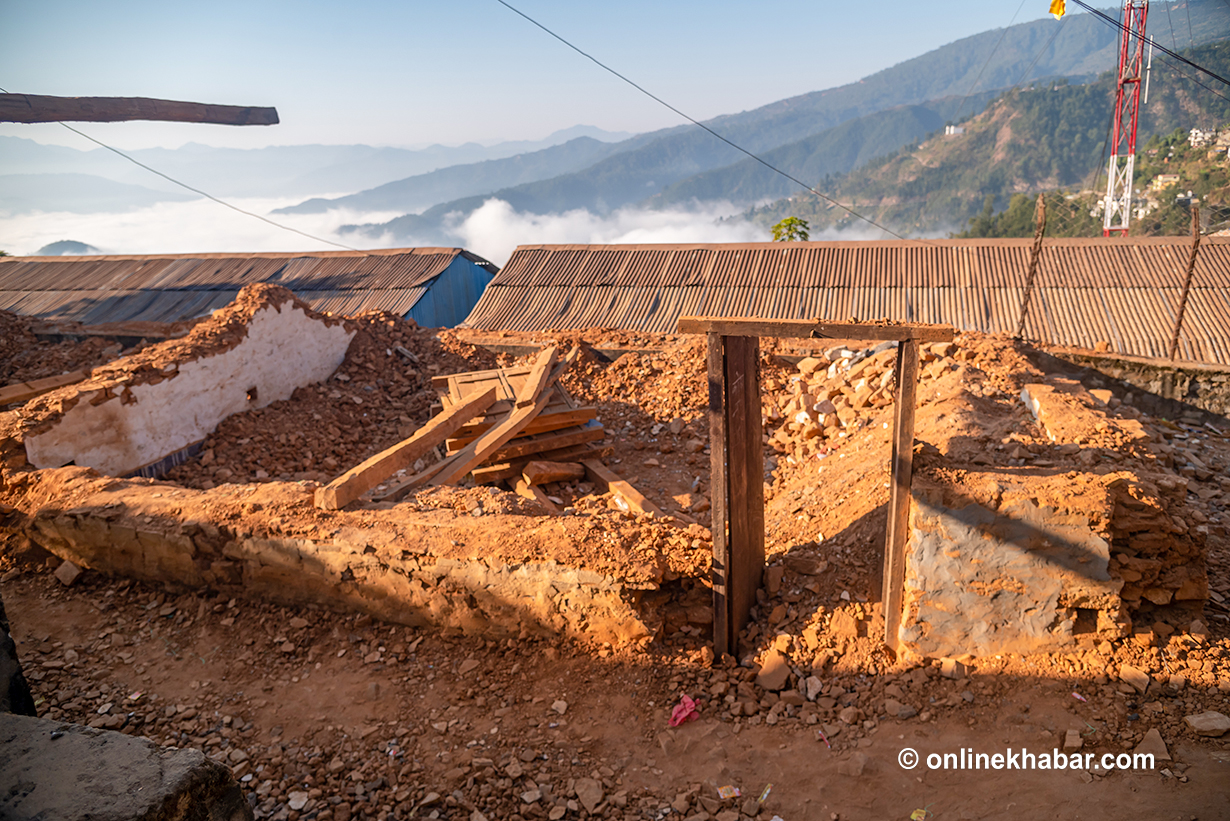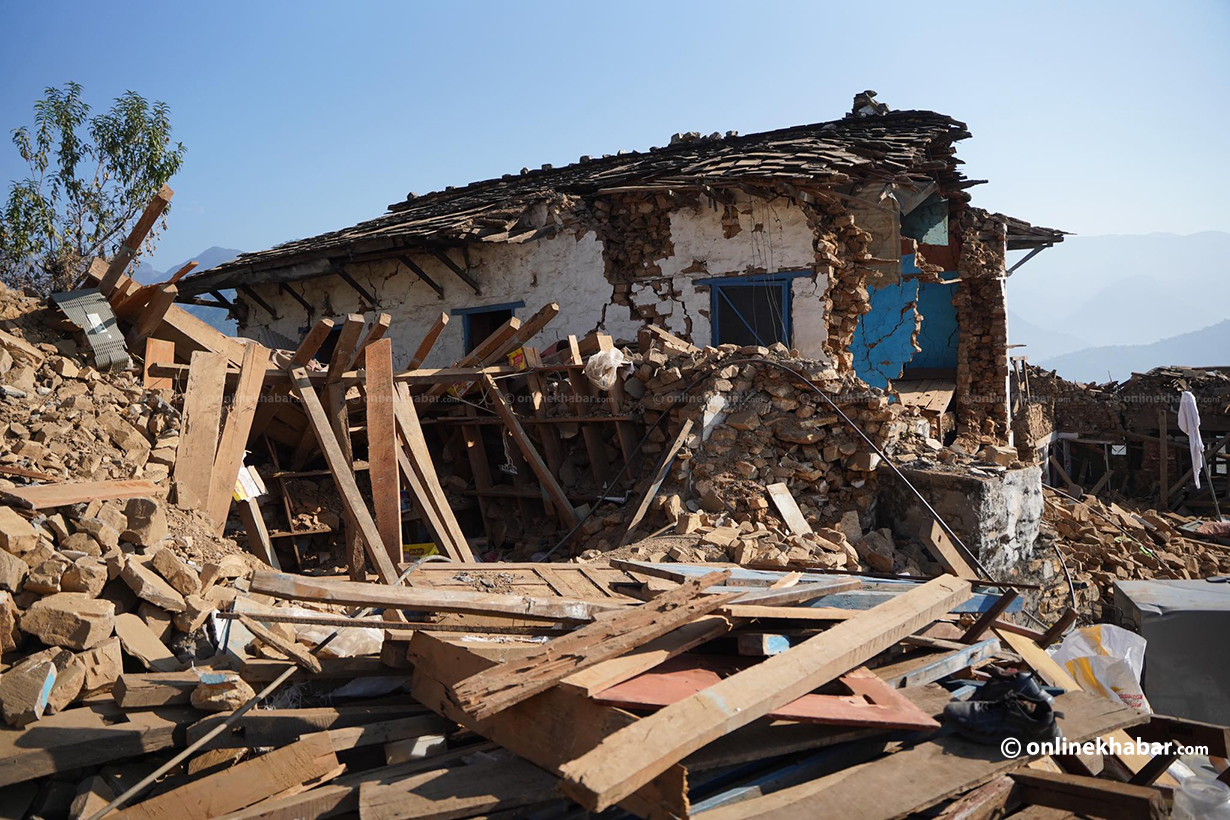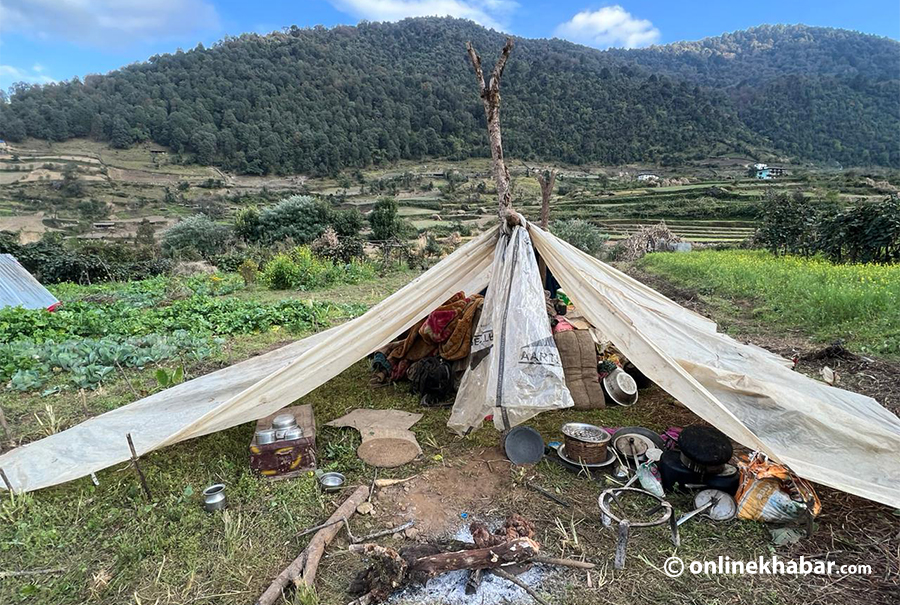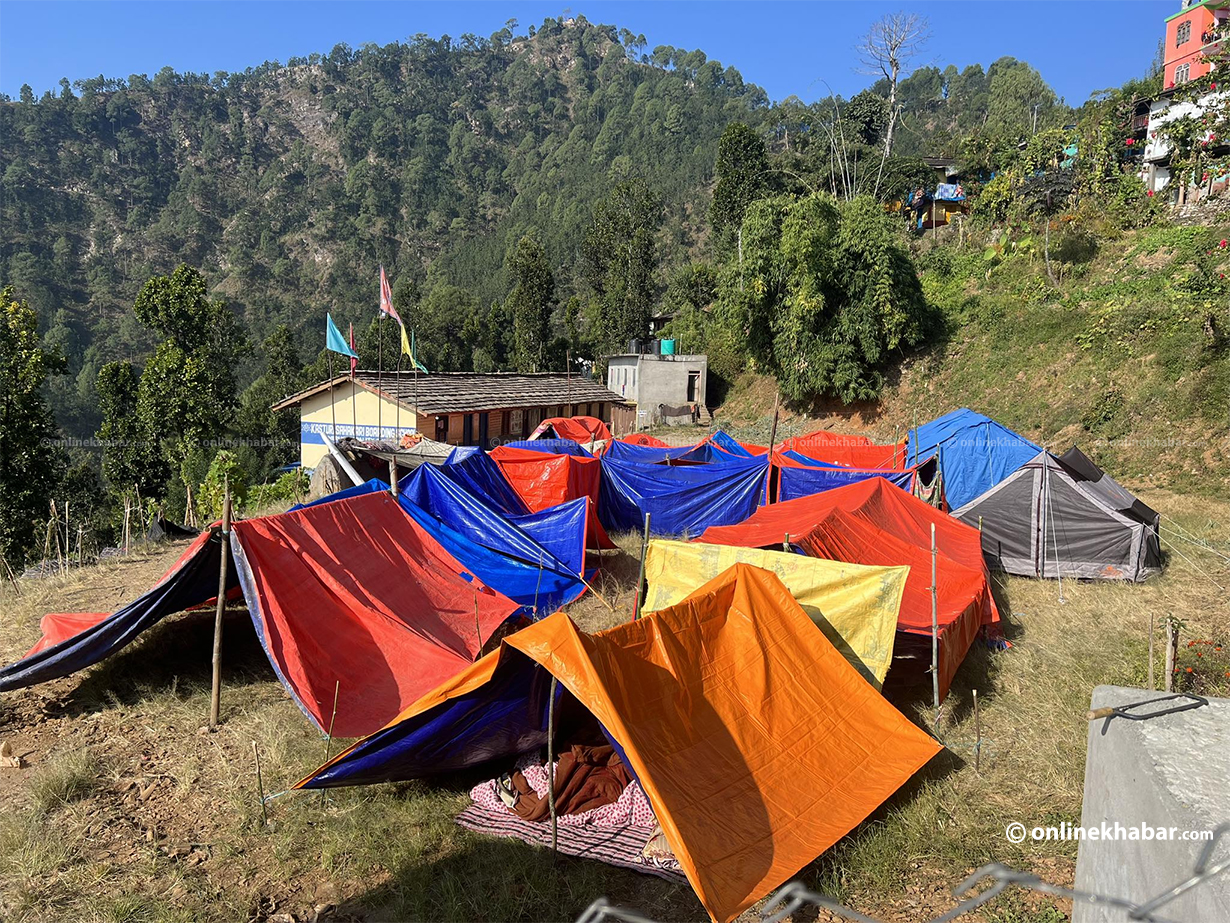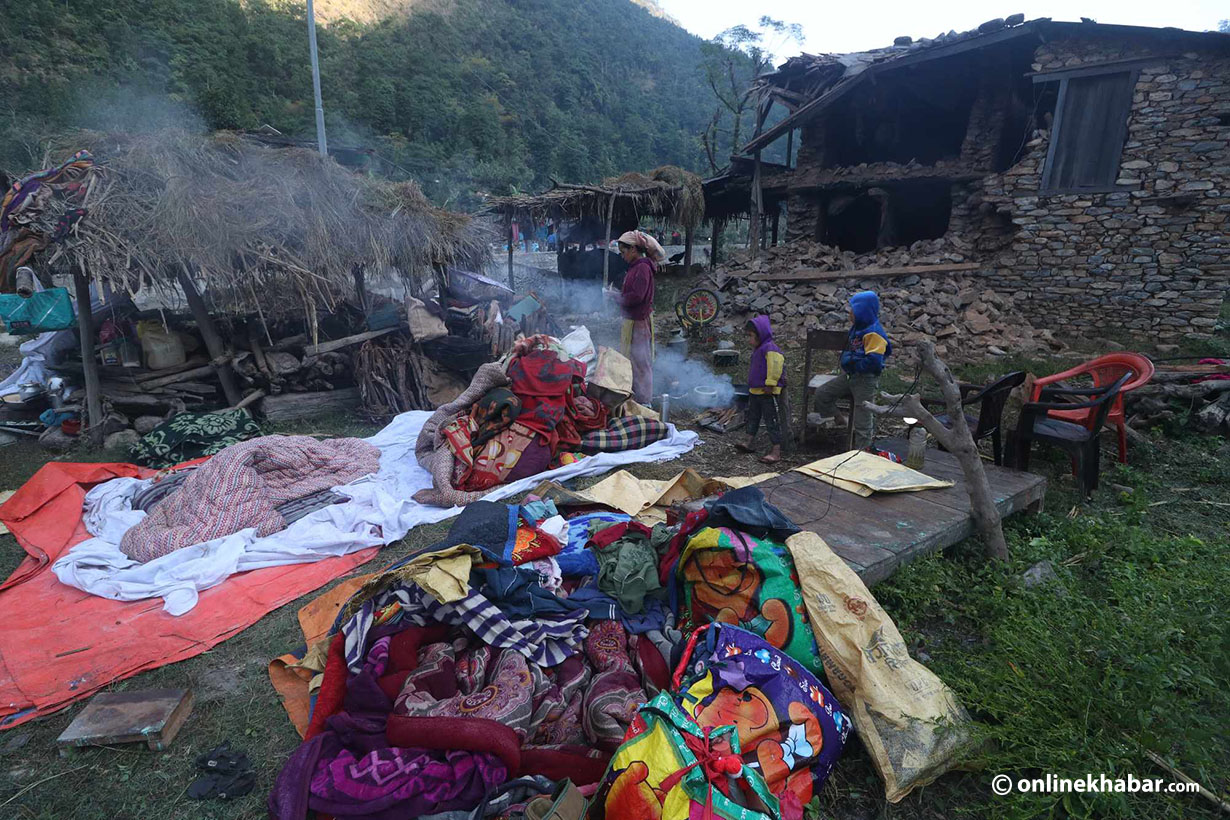
Bhumi Lal Gharti of Ramidanda in Barekot Rural Municipality, the epicentre of the Jajarkot earthquake, was peacefully sleeping when a loud thud woke him. After realising it was an earthquake, most of the locals along with Gharti left their homes seeking refuge outside.
Even though Gharti lost his ancestral home, which had stood for generations, he is grateful that his family is safe. At this point, he is uncertain if he will ever be able to enter the house again.
“I don’t know where we will spend the night and what we will eat,” he says.

The situation for most residents in the Ramidanda area mirrors that of Gharti. Despite being close to the epicentre, there have been no human casualties. Additionally, the physical damage is comparatively less severe than in nearby areas like Nalagad, Jajarkot, and Aathbiskot in Rukum West.
Bir Bahadur Giri, the chair of Barekot Rural Municipality, explains that the situation at the epicentre is comparatively less challenging than in other areas.
“Seven people were injured in the earthquake. Three of them were serious and have been taken to Surkhet for further treatment. Local health posts are coping well and tending to the people with minor injuries,” he says.
While there were no human casualties, the earthquake destroyed most of the houses in the area.
Giri says that around 100 houses have been reduced to rubble, with an additional 400 severely damaged. The earthquake has affected approximately 1,000 houses in total.
Cold nights
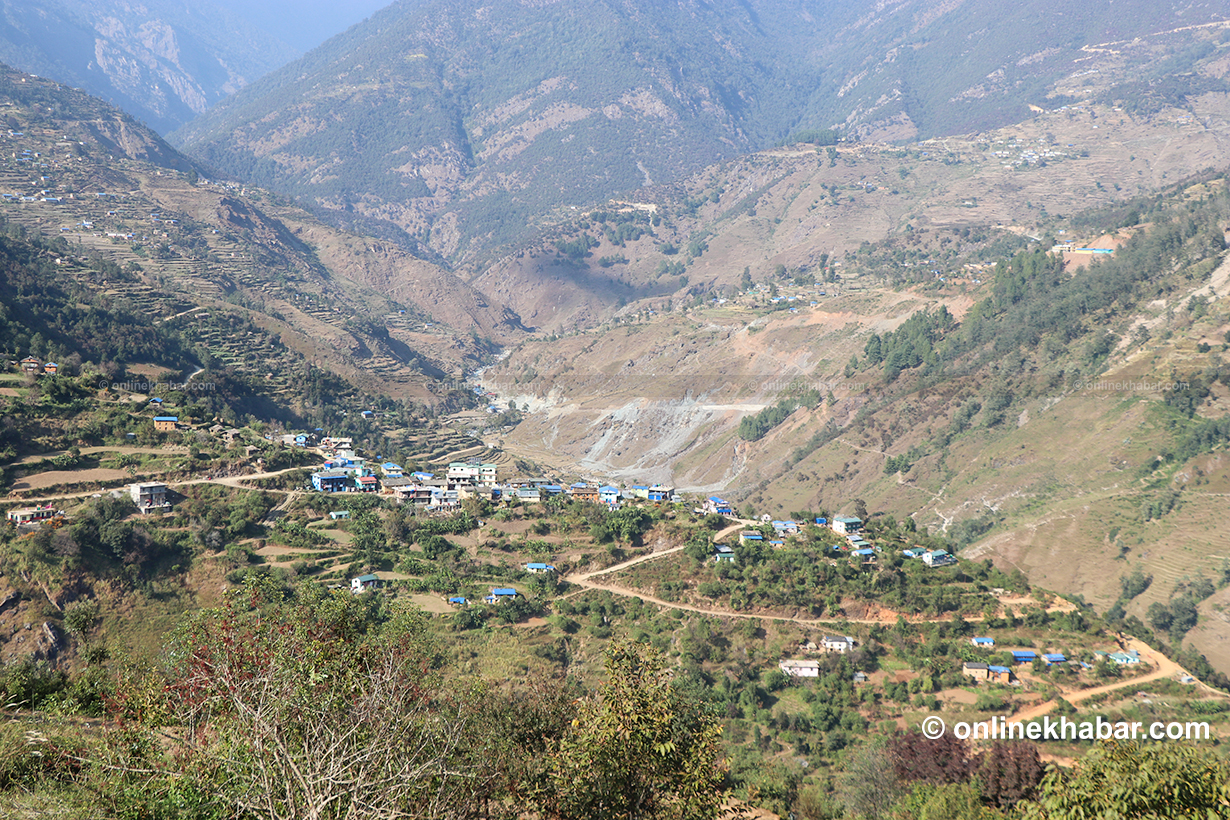
After the earthquake demolished her house, 53-year-old Sushila Gharti, who relies on her livestock for her livelihood, took her animals to the jungle for shelter. She spends her nights in an old tent set up on the edge of the field, with the goats tied around it.
“The livestock are in the jungle. I don’t know where to keep the goats. The situation has become dire as we lack proper shelter and we do not have tents. We are worried about how to survive and protect our livestock,” says Sushila.
Like Sushila, most of the residents of Sirpachaur have been releasing their livestock to the jungle and are living in the open fields.

The families in these areas are facing a challenging situation as they continue to experience aftershocks. While relief workers have gathered initial information about the earthquake’s damage, the focus of relief efforts has shifted towards more severely affected areas like Nalagad and Rukum West, leaving locals in Barekot feeling frustrated. Despite the low human casualties, people enduring cold nights are now eagerly awaiting relief and rehabilitation efforts.
Dil Bahadur Singh, the vice chair of the district coordination committee, points out that the primary issue in this region is the shortage of habitable homes.
“People don’t have a place to stay. That is a major issue for people along with issues regarding livestock management,” says Singh. “This needs to be addressed immediately.”
Khum Prasad Pun and Kamaldev Gharti from Sirpachaur are urgently requesting immediate arrangements to protect themselves from the cold while they are living in the open.
“We’ve been sleeping in tents since the earthquake. Recently, the chairman and a police inspector visited us with biscuits and chiura (beaten rice). They assured us that they are working on providing tents for us,” says Kamaldev.






